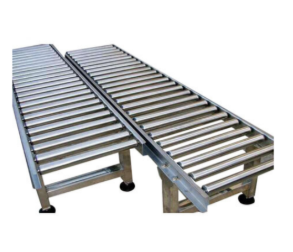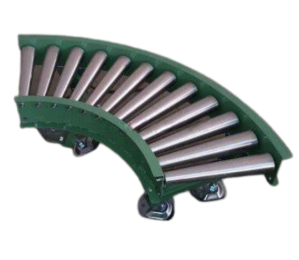Straight vs. Tapered Rollers — What’s the Difference and Why It Matters
Fun Fact: in 2024, US households received an average of 23.8 million packages every day, and on holidays, that number shoots up to 77 million a day. Every one of those packages traveled on a roller. But are not all rollers the same. One simple difference: straight vs tapered. Read more about the differences here:
In conveyor and material handling systems, rollers are essential to keeping products moving efficiently. But not all rollers are designed the same. Two of the most common types are straight rollers and tapered rollers — and while they may look similar at first glance, they serve very different purposes.
At USA Rollers, part of Solve Industrial Motion Group, we engineer both straight and tapered roller solutions to meet the needs of industries ranging from distribution and packaging to airport baggage handling and manufacturing. Here’s a closer look at how these rollers differ, and how to know which one is right for your application.
Straight Rollers

Straight rollers are exactly what they sound like: cylindrical rollers with a consistent diameter across their length.
- Primary use: Moving products in a straight line.
- Applications: Packaging lines, assembly operations, and general material handling.
- Advantages:
- Simple, cost-effective design.
- Ideal for consistent product flow.
- Easy to install and maintain.
- Limitations: Not suited for curves — products may drift or jam if used in turns.
Tapered Rollers

Tapered rollers are designed with a slight conical shape, narrower at one end and wider at the other. This unique geometry makes them ideal for conveyor curves.
- Primary use: Guiding products smoothly around corners and curves.
- Applications: Distribution centers, airport baggage systems, e-commerce fulfillment lines.
- Advantages:
- Ensures products stay aligned through curves.
- Prevents items from bunching or sliding off track.
- Provides smoother flow with less product damage.
- Limitations: More specialized, with slightly higher initial cost than straight rollers.
Straight vs. Tapered: A Quick Comparison
| Feature | Straight Rollers | Tapered Rollers |
|---|---|---|
| Shape | Uniform cylinder | Narrow-to-wide conical profile |
| Best For | Straight-line transport | Curves and turns in conveyor systems |
| Advantages | Cost-effective, simple, easy to replace | Keeps products aligned, smooth cornering |
| Common Uses | Packaging, assembly, flat conveyors | Distribution centers, baggage handling, e-commerce |
| Limitations | Products may drift on curves | Higher cost, specialized design |
Subscribe and be the first to know when new articles are published.
We Keep You Moving Forward
Whether it's "Made in the USA" conveyor rollers, conveyor bearings, or other products from our broad portfolio of bearings and power transmission components, turn to Solve to be your one-stop shop for engineered bearings and power transmission solutions.
